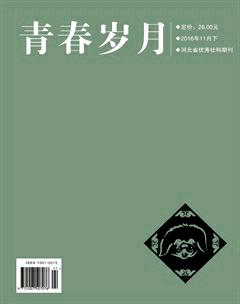Narrative Strategies Employed in The Collector
Abstract:The Collector is the novel written by John Fowles in 1963, which is his first novel and also brought him with huge commercial interests along with comments from critics and scholars.
Key words:intertextuality;narrative structure;narrative perspective
John Fowles was living in the time when novelists were in the great pursuit of narrative pattern research. Hence his works are inevitably influenced. Beside his language, his novels are also marvelous for his outstanding narrative patterns arrangement. In this thesis, a research will be conducted onto his narrative pattern in the aspects of narrative perspectives, narrative structure and parody. By this research, more information and references are intended to obtain for the further study on this area.
1. Two First-person Narrators
The use of multiple narrative perspectives is a major feature of modern literary works. The Collector uses two first-person narrators, which effectively combines advantages of internal focalization and zero focalization, creating a three-dimensional structure of space and achieving the artistic effect, which is different for single narrative perspective to obtain. At the same time, it deepens the theme of the novel and makes the works better with rich aesthetic implication.
2. Linear And Circular Narrative
The first embodiment of liner narrative in The Collector is the application of juxtaposition narrative. That is to collocate various plots and characters activity around the theme, or to collage various fragments around the central figure. In The Collector, Fowles used various forms of juxtaposition narrative, such as multiple perspectives, repeated narration, open-ending, and so on.
3. Intertextuality
It is a breakthrough to interpret The Collector from the perspective of intertextuality. The Collector is not only an intertextuality of The Tempest, but also intertextuality of Desolate Island literature.
(1)Intertextuality of The Tempest
The broad sense of Intertextuality refers to the interaction between literary works and social history, and it includes the authors use of implication of literary, social-historical and philosophical texts. We can analyze The Collector in the broad sense of intertextuality. There are two kinds of broad sense of intertextuality, which have influence on the formation of the novels meaning and readers reading mentality on the reception of the novel. They are the “anger” after World War II and existential philosophys deeper thinking towards human freedom.
Cleeg, the protagonist in The Collector, maximized the “anger” in the society to the limit, as the characters of anti-hero in the literary circle of the 60s. The childhood misfortune and youth underappreciated experience together made him erupted in fury.
The imprisoned Mirandas secret diary is the central element of the second part of this novel. She expresses her indignation for Clegg, who was psychopathic under normal appearance. Miranda is a woman with rebellious spirit. Her confrontation with Clegg is a desperate wrestle about freedom and imprisonment, existence and possession, manipulation and being manipulated. But she did not make it and could not escape from the doom of death, because the strength gap was too big.
(2)Intertextuality of Desolate Island literature
The Collector is also intertextuality of Desolate Island Literature works. As an admirer of Defoe, he also created an isolated island, a hidden cellar, as what Defoe had created in Robinson Crusoe to pastiche a similar narrative environment. Synthesizing with Fowles esteem for Defoes environment setting, we can analyze the intertextual relationship between the two texts. “Outskirts hidden basement” is actually the well designed “desert island”, the author created for contemporary characters. In the theory of Intertextuality it is recognized that the text of any work is the combination of a lot of texts, like mosaic products, and any text is the absorption and transformation of other texts. The Collector is an adsorption and conversion of Desolate Island Literature. The association between previous and literary work was naturally built in the way of intertextuality.
4. Conclusion
Through the analysis of The Collector, we can find the modern society is ill, full of loneliness and cruelty. And the alienated society results in the distorted men and tragedy. As a work of modernism, The Collector shows concern for human relationships and respect for human beings.
Narrative strategy is another distinctive character of this novel. Two first-person narratives are prominent in The Collector. Cleggs narration includes Mirandas narration, foreshadowing Cleggs imprisonment on Miranda. As for the writing techniques, intertextuality is employed successfully to present imprisonment. Last but not least, transverse narrative is employed by Fowles successfully to express the theme of the novel.
【Works Cited】
[1] Roland, Barthes. Elements of Semiology[M]. London: Atlantic Books, 1997.
[2] Defoe, Daniel. Robinson Crusoe[M]. London: Harpercollins Pb, 2010.
[3] Fowles, John. The Collector[M]. New York:Vintage Classics, 2004.
[4] Julia, Kristeva. Desire in Language: A Semiotic Approach to Literature and Art[M]. New York: Columbia University Press, 1982.
[5] HufFaker, Robert. John Fowles[M]. Boston: Twayne Publishers, 1980.
[6] Lodge, David . The Art of Fiction[M]. London: Penguin Books, 1994.
[7] Loveday, Simon. The Romances of John Fowles[M]. New York: St. Martins Press, 1985.
[8] Michel, Foucault. Lectures on the Will to Know[M]. London: Palgrave Macmillan, 2013.
[9] Shakespeare, William. The Tempest[M]. New York:Random House, 1988.
【作者简介】
李欢欢(1991—),女,汉族,辽宁省大连市人,硕士研究生学历,单位:长春市长春理工大学,主要研究方向:英语语言及教学法理论。

